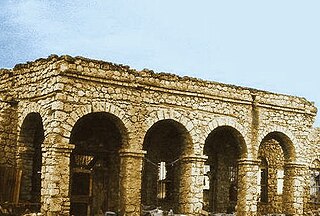
Awdal is an administrative region (gobol) in western Somaliland. It was separated from Woqooyi Galbeed and became a province in 1984 and is the most northwesterly province of Somaliland. To the east it borders Maroodi Jeex and Sahil; to its north-west it borders Djibouti; to its south and south-west lies Ethiopia; and the Gulf of Aden to its north. The province has an estimated population of 1,010,566. The region comprises the four districts of Borama, the regional capital, Baki, Lughaya, and Zeila.

Harar, known historically by the indigenous as Harar-Gey or simply Gey, is a walled city in eastern Ethiopia. It is also known in Arabic as the City of Saints.

French Somaliland was a French colony in the Horn of Africa. It existed between 1884 and 1967, at which time it became the French Territory of the Afars and the Issas, after the French empowered the Issa and Afars at the expense of the Gadabuursi and Arabs. The Republic of Djibouti is its legal successor state.
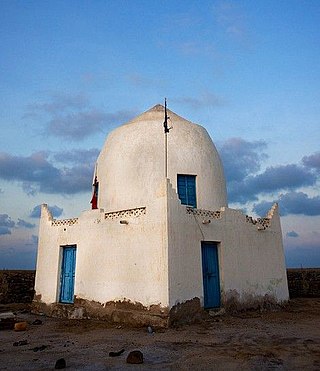
Zeila, also known as Zaila or Zayla, is a historical port town in the western Awdal region of Somaliland.
The Dir is one of the largest and most prominent Somali clans in the Horn of Africa. They are also considered to be the oldest Somali stock to have inhabited the region. Its members inhabit Djibouti, Somalia, Ethiopia, and northeastern Kenya.

The Gadabuursi, also known as Samaroon, is a northern Somali clan, a sub-division of the Dir clan family.
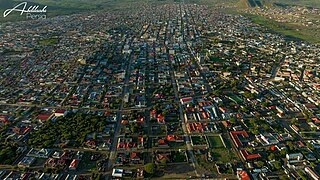
Borama is the largest city of the northwestern Awdal region of Somaliland. The commercial seat of the province, it is situated near the border with Ethiopia.
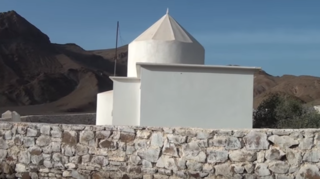
The Issa is a northern Somali clan, a sub-division of the Dir clan family.

Lughaya is a coastal town in the northwestern Awdal region of Somaliland.
The Habr Awal, also contemporarily known as the Subeer Awal, and alternately romanized as the Zubeyr Awal is a major Northern Somali clan of the wider Isaaq clan family, and is further divided into eight sub-clans of whom the two largest and most prominent are the Issa Musa and Sa'ad Musa sub-clans. Its members form a part of the Habar Magadle confederation.

Awbare, officially known as Teferi Ber and called after its patron Saint Awbare, is a town in eastern Ethiopia located in the Fafan Zone of the Somali Region, near the border with Somaliland on the main trade route between Jijiga and the sea. It is the administrative centre of the Awbare district.
Metehara is a town in central Ethiopia. Located in the East Shewa Zone of the Oromia Region, it has a latitude and longitude of 08°54′N39°55′E with an elevation of 947 meters above sea level.

Borama District is a district of the Awdal region in Somaliland.

Lughaya District is a district of the Awdal region in Somaliland. Lughaya District has a total population of 101,104 residents.

Gerisa is a town in the northwestern Awdal region of Somaliland.

Harirad is a town in the northwestern Awdal region of Somaliland. It is about 87 km northwest of Borama and 3 km (2 mi) north of the border with Ethiopia. With an elevation of 972 meters above sea level, the settlement sprawls on a wide basin surrounded by granite mountains on all sides.
Asha Addo is a town located in Awdal, Somaliland.
The Gurgura, Gorgorah or Gurgure is a northern Somali clan, a sub-division of the Dir clan family.
The Issa Musa or ‘Isa Musa is a northern Somali clan. Its clan of the wider Isaaq clan family. The Issa Musa are divided into four major sub-clans: Mohammed Issa, Adam Issa, Abokor Issa and Idarais Issa. The Isa Musa traditionally consists of coastal people, nomadic pastoralist and merchants. This clan are primarily settled in Somaliland, including Maroodi Jeex, Togdheer, Sahil,Awdal,Djibouti Ethiopia, as well as Kenya. The Issa Musse have produced many prominent Somali figures with the Undersecretary General of the United Nations Abdulrahim Abby Farah, the first Somali Prime Minister & second President of Somaliland Muhammad Haji Ibrahim Egal, and the second tallest man in the world Hussein Bisad.
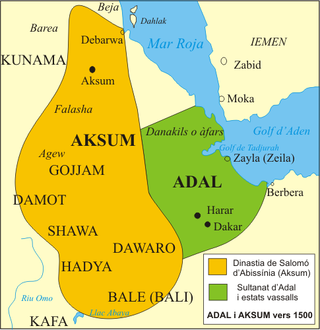
The Gadabuursi Ughazate or Ugasate evolved from and was a successor kingdom to the Adal Sultanate and Sultanate of Harar. The first Ughaz (Ugaas) of this successor kingdom, Ali Makail Dera was the son of Makail Dera, the progenitor of the Makayl-Dheere. During the late 19th century, as the region became subject to colonial rule, the Ughaz assumed a more traditional and ceremonial leadership of the clan. The Gadabuursi give their King the title of Ughaz. It's an authentic Somali term for King or Sultan. The Gadabuursi in particular are one of the clans with a long tradition of the institution of Sultan.
















